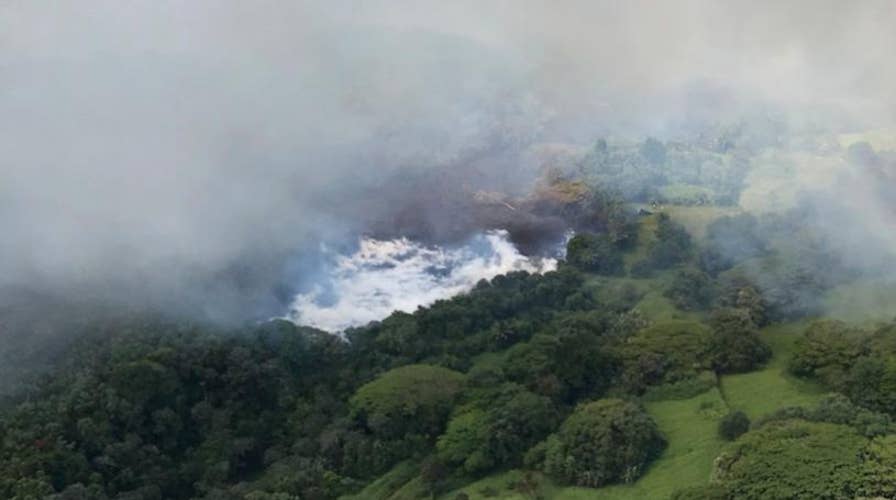Hawaii's Kilauea volcano lava claims a legendary victim
Hawaii's legendary freshwater Green Lake has been completely consumed by lava from the Kilauea volcano in only a matter of hours.
Lava from the Kilauea eruption has boiled away Hawaii’s largest freshwater lake in just a matter of hours.
In a statement released on June 2, the U.S. Geological Survey explained that lava from the eruption’s fissure 8 entered Green Lake and boiled its water away, sending a white plume high into the sky.
USGS tweeted the following day that lava entered Green Lake at 10 AM local time. By 3PM, Hawaii County Fire Department confirmed that the lake had filled and that its water had evaporated.
HAWAII VOLCANO ERUPTION: HOW MANY PEOPLE ARE KILLED BY VOLCANOES?
Located about 25 miles from Kilauea, Green Lake, known locally as Ka Wai a Pele, is the largest of only two freshwater lakes on the Big Island, according to the Only in Hawaii website. Prior to becoming the latest victim of the eruption, the 400-year-old lake was an idyllic spot.
Kilauea began spewing lava on May 3. The volcano, one of the most active in the world, has already destroyed more than 600 homes. President Trump declared a major disaster area in Hawaii on May 11.
At Kilauea's summit, there continues to be explosions that shoot plumes of ash into the sky. There were two small blasts Monday, including one after a magnitude-5.4 earthquake, scientists said.
DRAMATIC VOLCANO DEATH: HUGE FLYING STONE CRUSHED MAN IN POMPEII, ARCHAEOLOGISTS DISCOVER
On Monday, the U.S. Geological Survey posted remarkable footage of molten lava from Kilauea’s lower East Rift Zone entering the ocean. The video, captured from a helicopter, shows lava “exploding” in a cloud of steam, hot water, and tephra, or molten splatter, called a “tephra jet.”
Scientists warn against venturing too close to where the lava is entering the ocean, saying it could expose people to dangers from flying debris.
Lava from the volcano has also been spewing a deadly plume containing tiny particles of volcanic glass.
HAWAII VOLCANO: WHY KILAUEA'S LAVA IS CAUSING EERIE BLUE FLAMES
Known as “laze” – a combination of the words “lava” and “haze,” the plume occurs when molten lava flows into the ocean. “It reacts vigorously with sea water to create a different type of gas plume that results in hazy and noxious conditions downwind of an ocean entry,” explained the Hawaiian Volcano Observatory, in a statement.
Created by chemical reactions as hot lava boils seawater to dryness, the plume is described as “an irritating mixture of hydrochloric acid gas (HCl), steam, and tiny volcanic glass particles.”
Underscoring the eruption's dangers, a Hawaii man was hit by a flying piece of lava last month and said the molten rock nearly sheared his leg in half.
The Associated Press contributed to this article.
Follow James Rogers on Twitter @jamesjrogers
